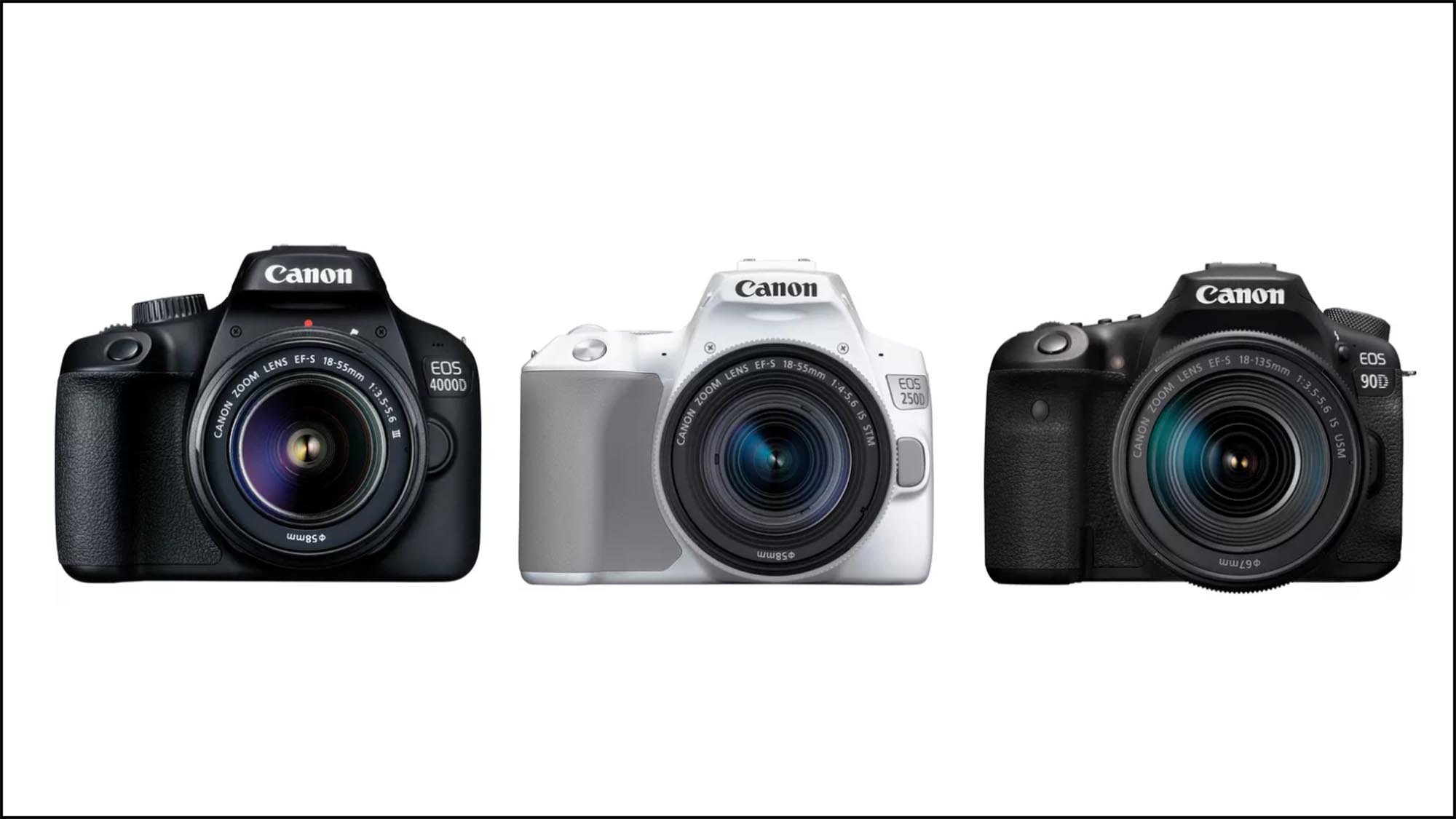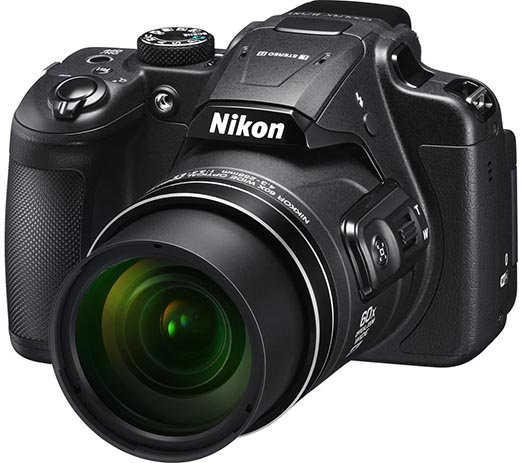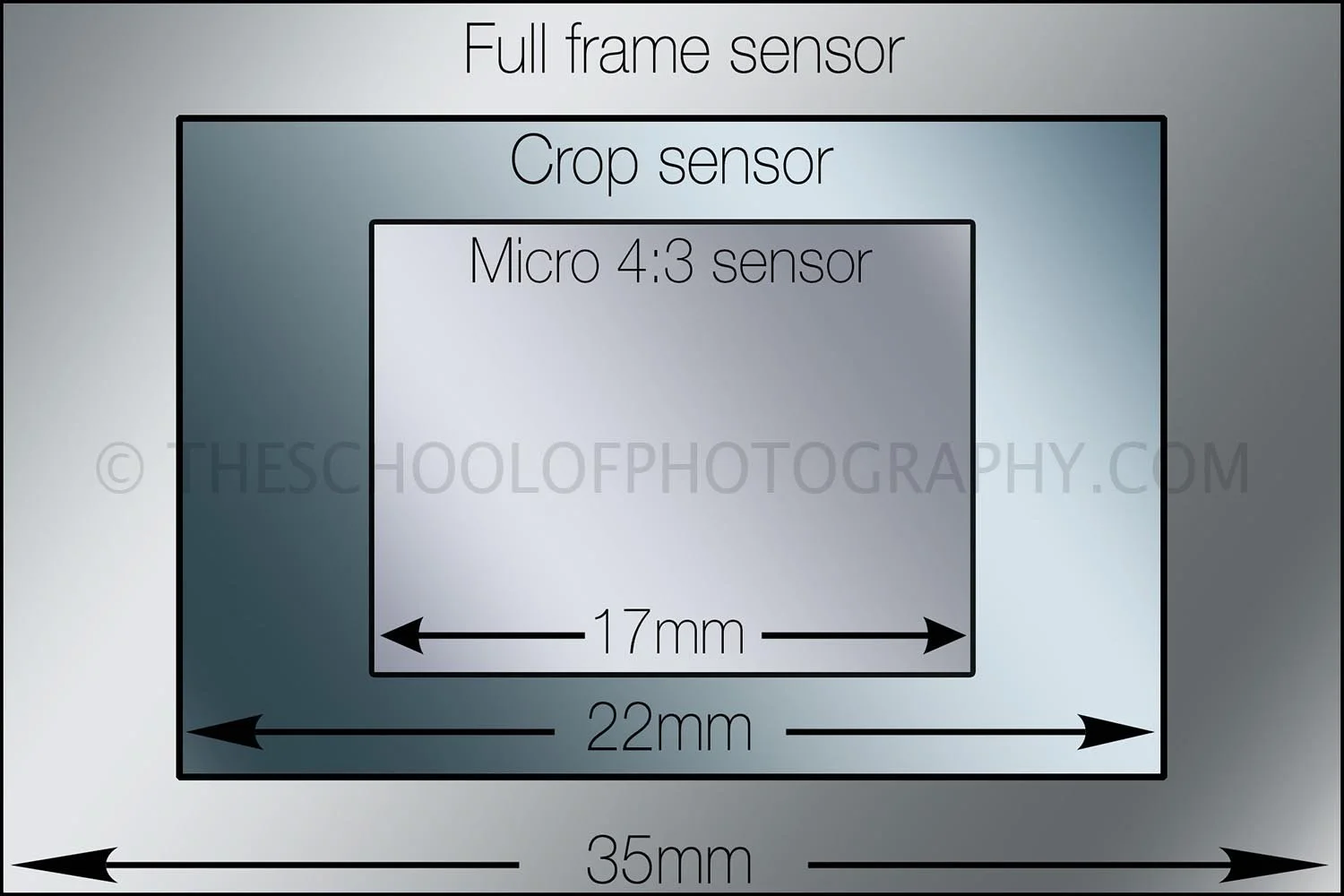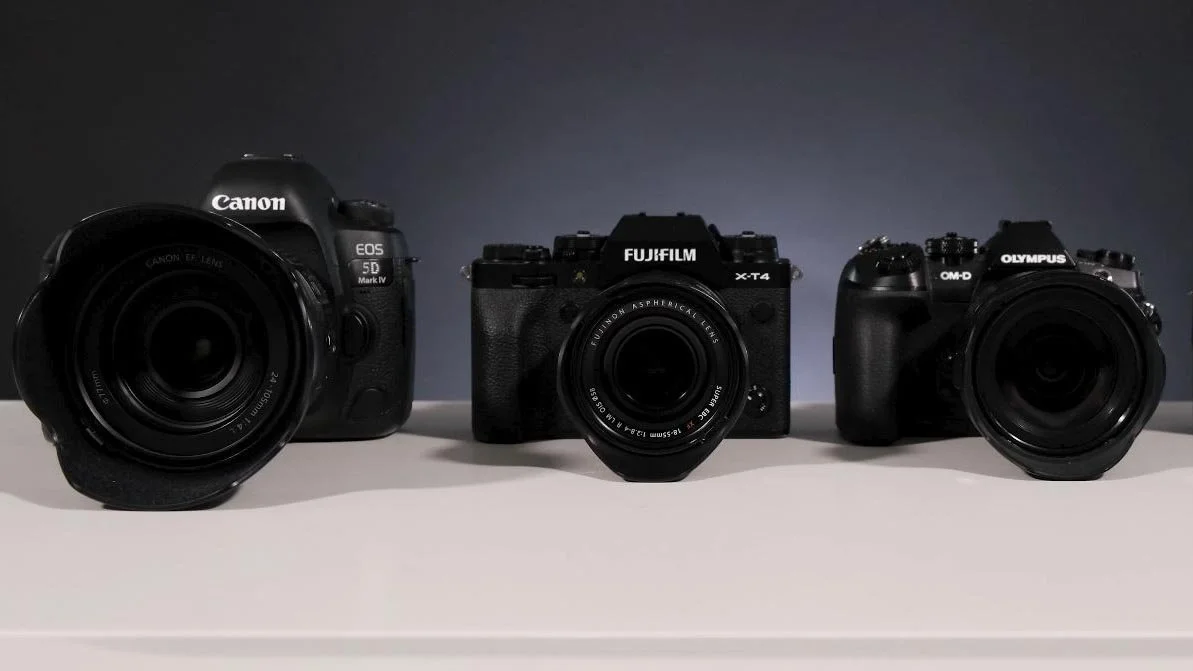Best Beginner Camera 2025 - What you need to know
2025’s world of photography might seem overwhelming at first. With hundreds of cameras on the market, it might be tricky to decide which one is the best beginner camera for you. Luckily, we’ve put together a guide to help you choose which beginner camera best suits you, whatever your budget might be.
Get access to ALL our online courses – 1000’s of videos, worksheets, critiques of student’s work, personalised support and much more with our monthly membership.
Time Stamps
00:00 - Best Beginner Camera 2024 intro 00:43 - Your Budget 01:33 - Why are cameras different prices? 02:07 - Let's be realistic 03:15 - My recommendation on budget spend 03:36 - Types of cameras 04:15 - Mirrorless vs DSLR 05:43 - Size of your kit 09:32 - Image Quality 11:05 - Camera Brands 13:50 - Will you be making films? 14:39 - Buying second hand 17:15 - Recap- What should you be looking for?
What’s Your Camera Budget?
Which takes us to the first step in choosing a beginner camera; what is your budget?
It’s important to first decide what your budget will be as beginner cameras can range from £100’s to the £1,000’s. You will inevitably be flooded with different brands, models, features and likely have tens of tabs open comparing different features. Close those tabs now! We’ll get you started, so let’s begin with your budget.
Around £350-500: You can expect to get a good budget beginner camera and lens for this price.
Around £500-1,000: You can expect to get a good mid-range camera and lens for this price. Where your budget is higher, you can expect to start getting more features in a more compact body.
£1,000+: As to be expected with a high budget, you’ll be getting into high end models here. Whilst these will boast more features, you may not need these whilst only first beginning to learn. If you have the budget and are happy to purchase your first camera in this price range, go for it! You will be getting an excellent camera and it can be a good investment.
Three examples from Canon’s range of varying budgets. The left (Canon EOS 4000D) is an entry level budget camera. Centre is a Canon EOS 2500, a mid-range camera. The far right (Canon 90D) is a high end camera.
Learn how to use your camera properly here.
Why are Camera’s different prices?
The biggest difference you will find between a low and high-end camera is their build. You will find an entry level camera will have a plastic build, whereas a high model will be made of metals, will be significantly more durable and be weather proofed.
It's not just build quality that you pay more for. It’s the computer processor too. The faster the processor, the more it can do. Examples being fast continuous shutter bursts and pro filming features like 4k slow mo. Just like how a computer runs faster with a better processor, or a car drives faster with a more powerful engine, cameras run along this theme too.
Think you might want a more robust model that can take a knock or two? It might be worth investing in a more expensive camera, as this is what you pay for. However, it’s just for learning a lowest cost model will do the trick.
Let’s be realistic
Don’t stress if your budget doesn’t meet the cost of a high-end camera. A low cost beginner camera is perfectly capable of covering what you need while you are learning and you can always upgrade at a later date.
Remember- a more expensive camera will not make your photography better if you don’t know how to use a lower-end/budget camera. If you are looking for a beginner camera, you will achieve the same results with a budget camera as you would a high-end whilst learning.
More money doesn’t equal better photos! If you want proof of this, see our other blog £3,800 vs £150 – is it worth it?
The types of beginner cameras
Next, you’ll want to consider what type of beginner camera you’re looking for. Cameras typically fall into these three categories:
COMPACT- a compact is typically a point and shoot camera, small enough to fit into your pocket. These have a fixed, non-interchangeable lens and will typically have automatic settings. These aren’t recommended if you want to learn the ins and outs of photography. Whilst they can be a good beginner camera, they will typically have smaller sensors, and so compromises quality in low light settings (more on this later!)
An example of a compact camera, known as a ‘point and shoot’.
BRIDGE-a bridge camera is similar to a compact, due to both having fixed, non-interchangeable lenses. However, with a bridge comes some more advanced features. One of the most noticeable differences between a bridge and a compact is the power of the zoom, which is what makes the bridge less of a compact beginner camera. A handy beginner camera but limiting in its image quality and learning prospects. We don’t recommend a bridge camera for learning as it’s aimed at the point and shoot type person, not someone who wants to take control of the visual effects of photography via manual settings and other lenses.
An example of a bridge camera
DSLR/MIRRORLESS- These are what we highly recommend be your choice for a beginner camera. With interchangeable lenses, manual settings and all-round better features for a beginner, a DSLR or mirrorless is the best place to begin learning photography. This camera would give beginners more control, a better sensor and the interchangeability between lenses.
An example of a DSLR camera
As long you have a camera with an interchangeable lens and the ability to go fully manual, you have the right beginner camera to learn with and take control of the visual effects of photography.
Mirrorless vs Non Mirrorless
Whilst on your search for the best beginner camera 2023 has to offer, you’ve likely seen the term “mirrorless” and wondered what it meant?
A mirrored camera has a mirror inside that allows light to bounce and reflect into the viewfinder. This in turn gives you a live view of your subject. With a mirrorless camera, these mirrors are removed, which enables the camera body to be more compact. The viewfinder is a digital representation of the scene rather than a live view of it. Similar to looking at a TV projection of what the sensor is seeing. This electronic viewfinder can mean a delay in the view, but does mean a smaller camera body can be produced.
An example of a mirrored (left) camera and a non-mirrored camera (right).
Pros of DSLR camera
Optical viewfinders, therefore no delay
Usually have longer battery lives
Typically cheaper than a mirrorless
Cons of DSLR camera
They are heavier and bulkier
Pros of Mirrorless camera
Lighter and more compact
An electronic viewfinder means a more accurate preview of image exposure
Silent shooting modes
Cons of Mirrorless camera
A shorter battery life
More expensive
Potential delay in viewfinder
An LCD display can be problematic when outside in bright light
Consider the size of your camera kit
How much are you willing to carry around with you? Remember, the camera itself is not the only factor to consider here. The camera body, lenses, tripod, camera bag- these are all largely dictated by the size of the camera. The camera’s size is largely directed by the size of its light sensor.
Camera equipment laid out showing how much can go into a kit.
To break it down, a sensor is a light sensor within the camera body, and this is what captures the light and gives you an image. The common sensor sizes are:
- Full frame sensor (35mm)
-Crop/APS-C sensor (22mm)
- Micro 4:3 (17mm)
A diagram showing the size differences between a Full Frame, Crop and Micro sensor, as well as their sizes
Take a look at these two cameras below. The Canon on the left is significantly larger than the Olympus on the right, and this is due to the Olympus having a micro 4:3 sensor, whereas the Canon has a full frame sensor.
A camera with a full frame sensor (left) vs a camera with a micro 4:3 sensor (right)
Next, take a look at this Fujifilm below (centre), a cropped sensor camera. Whilst initially they look similar, the differences come when you begin to use lenses. The Micro 4:3 sensor camera (in this case, the Olympus) will hold lighter and smaller lenses, whereas the crop sensor camera will require bigger lenses, with the full frame camera needing even bigger lenses.
Three cameras showing size differences based on sensor sizes; Full frame (Left, Canon), Cropped (Centre, Fujifilm), and Micro 4:3 (Right, Olympus)
Remember, the larger the sensor, the larger the lenses and camera body. The larger the camera, the heavier the tripod. The weight and size of your camera kit very quickly adds up!
Your Camera’s Image Quality
Now we’ve discussed the different sensor sizes, it’s time to consider the image quality and the purpose of your photos. The bigger the sensor size, the better the image quality will be.
Bigger sensors perform better at higher ISOs needed for low light photography. However, there is a trade off to that- the bulkier camera.
When deciding which sensor size is right for you, consider the following pros and cons.
Full Frame Sensors
Pros
Bigger sensors mean more detail – Comes into effect if printing very big images or doing high end retouching and digital manipulation.
Better in low light situations – A bigger sensor has bigger pixels which means each pixel can capture more light and this creates less noise at higher ISOs.
To learn more about ISO and noise, click here.
Cons
Bigger camera bodies and bigger lenses – Full frame sensor kits are a lot larger and heavier. Don’t forget, the bigger the camera the bigger the lenses and tripod needed. When you start carrying around a full frame camera, 3 lenses and a tripod that will take its weight, you’ll notice the difference believe me!
Expensive – Full frame cameras tend to be more expensive. Not only this but the lenses and accessories for full frames are also more expensive so make sure you have deep pockets!
APS C and Micro 4:3 Sensors
Pros
Smaller kit- in contrast to the above these kits are a lot smaller and lighter, particularly the Micro 4 3 system. If you want to carry around a small kit with a light tripod, then this will be the way to go.
Cheaper – in general smaller sensor cameras are cheaper, particularly the APS C system. The APS C (crop sensor) system is the most common and therefore there are a lot of camera brands competing for your money and that’s where bargains can be had. The most cost-effective system is the starter camera kits most of the big names offer. Remember, it’s not what you’ve got it’s what you can do with it so don’t be fooled by spending big money to get great shots!
Cons
Lower quality than full frame – But let’s be clear on this, because APS C or Micro 4 3 is lower quality than full frame, doesn’t mean it’s ‘low quality’. These days all of these cameras produce fantastic results. See below examples of photographs taken with a Full Frame and Micro 4 3 sensor.
More noise at higher ISO – Smaller camera sensors tend to perform worst at high ISO’s. This will come into play in low light situations.
At the end of the day just figure out what it is you will be using your camera for. Will you be printing big prints? Will you be retouching or doing heavy manipulation to your photography? How much money do you want to spend? And how much you want to carry around with you?
Answer those questions and chose your system around that. As mentioned previously – It’s not what you’ve got, it’s how you use it. A good photographer will be able to take good pictures with any camera. For proof of this, click here.
What Camera Brand should I buy?
When it comes to a beginner camera, the brand quite simply doesn’t matter.
One brand over another won’t make your photography better, and they will all always be competing to offer the latest feature. Maybe one offers Bluetooth connection to your phone for transfer of photos? Maybe another connects to Wi-Fi for direct posting. Regardless of these features, the photography aspect remains the same.
What we would suggest is to ask your photographer friends. What camera brand do they have? When beginning your photography journey, it’s always good to have a friend who is into photography a phone call away to answer any questions you might have about the camera. For instance if you have a friend that uses Fuji cameras, maybe that’s the brand you want to go for. Then when looking for that auto focus setting you can’t find, you can give them a bell and ask where it is.
Some of the many different camera brands you can choose from.
The other thing you might consider is what deals are being offered. Don’t forget you will also need a camera bag, SD Card, tripod etc, so if there’s a good bundle deal going, there’s your answer!
Will you be making films with your camera?
Whether you’re a film student, vlogger, or just want to film some family memories, you can now get amazing quality from a DSLR camera. But which beginner camera can best film?
Take a look at the specs. We would recommend something that can film in 4K and shoot at 60fps. Whilst not necessarily essential, it’s a really good feature.
Buying Second-Hand Cameras
Buying second hand can be a really cost effective entry into photography, and potentially a great way to start your beginner photography journey. However, as with all second hand purchases, there are a few risks involved.
Here is what we would recommend looking for when browsing the second hand market:
-A low shutter count. Just like how you look at mileage on a car, look or ask what the shutter count is. This is easy and simple to find, and a great way to judge the life of the camera.
- The history of the camera. Just like the used car scenario, ask about the history, how many owners has it had? If the current owner bought it new and it has a low shutter count, you’re likely to be getting a decent camera. If they don’t know the history or the age, proceed with caution.
-The seller. If in doubt, check out a reputable seller such as camera shops or websites. These will often have a second-hand section, with professionals testing and making sure the camera is in good working order. These may sometimes also include an extended warranty with the shop and offer you a little more protection. Just be aware, with these advantages will come a slightly higher price tag than places such as a local selling group or auction site.
Amongst the vast world of second-hand cameras in 2023 lies refurbished cameras, another good route to get yourself a great beginner camera and save some money.
A refurbished camera is where a customer has bought the camera and then returned it. This can be for a whole range of reasons, such as a fault or simply not wanting it anymore. What’s great about a refurbished camera is that the company the camera is sent back to will check the camera over, fix the fault if needed and make it as good as new to resell. You’ll also likely get a year’s warranty.
Buy second-hand equipment UK - Buy second-hand equipment USA
Buying your Beginner Camera Recap
Budget! Stick to your budget. When you’re starting more money does not mean better photography!
Do you want a better build quality or invest your money in the future?
You will need a camera that goes fully manual and a lens is interchangeable.
Size! If size is really important, then consider the sensor sizes!
Consider image quality- not shooting at high ISOs’s or printing large? Then a smaller sensor is fine! Wanting the complete opposite? Go for the full frame sensor. And of course, you have the crop sensor for a happy medium.
Brand- You could go for the cheapest, this is fine! Alternatively, you can go for a more familiar brand to your photography friends in order to share knowledge
Filming- Will you be filming with your camera? If so, try to at least get a 4K filming camera, with 60fps as a great bonus.
Brand new or second hand? Buying second hand can be a great option, albeit a slightly riskier one. Just consider our points above!












